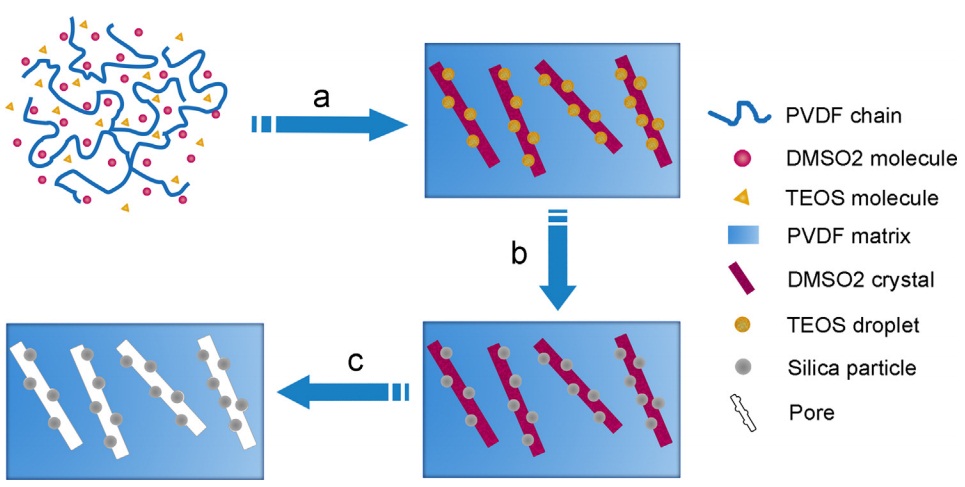Thermally induced phase separation followed by in situ sol-gel process: a novel method for PVDF/SiO2 hybrid membranes |
| Time:2014-07-15 13:01 |
Hong-Qing Liang, Qing-Yun Wu, Ling-Shu Wan, Xiao-Jun Huang, Zhi-Kang Xu. J. Membr. Sci., 2014, 465, 56–67.
DOI: 10.1016/j.memsci.2014.03.068
Abstract: Poly(vinylidene fluoride) (PVDF)/silica (SiO2) hybrid membranes have been prepared by the thermally induced phase separation (TIPS) of PVDF/dimethyl sulfone (DMSO2)/tetraethoxysilane (TEOS) followed by an in situ sol–gel process of TEOS. The two-steps rout integrates the enrichment of TEOS by TIPS and the hydrolysis of TEOS by in situ sol–gel reaction. As a result, two types of pores are obtained in the membranes: large tubular pores shaped by DMSO2 crystals and small round pores stemming from TEOS droplets. In fact, the TEOS droplets can be ‘hatchery’ where SiO2 particles are in situ generated by simply immersing the nascent membranes in an ethanol/ammonia solution for 12 h. Both FESEM images and energy dispersive X-ray analysis confirm that the SiO2 particles are uniformly dispersed inside the PVDF/SiO2 hybrid membranes, and their size and shape are well consistent with those of the small round pores. This integrating hybrid structure endows the membranes with high comprehensive properties including surface hydrophilicity, pure water flux, anti-compression property and mechanical strength. Moreover, the PVDF/SiO2 hybrid membranes can be used to separate protein mixture (bovine serum albumin (BSA) and bovine hemoglobin (BHb)) based on electrostatic interactions, and pH 5.9 is the optimal condition. This work provides a novel method to prepare organic−inorganic hybrid membranes for potential applications in the fields of immunological analysis and membrane chromatography.
 |
Read:3152
|
